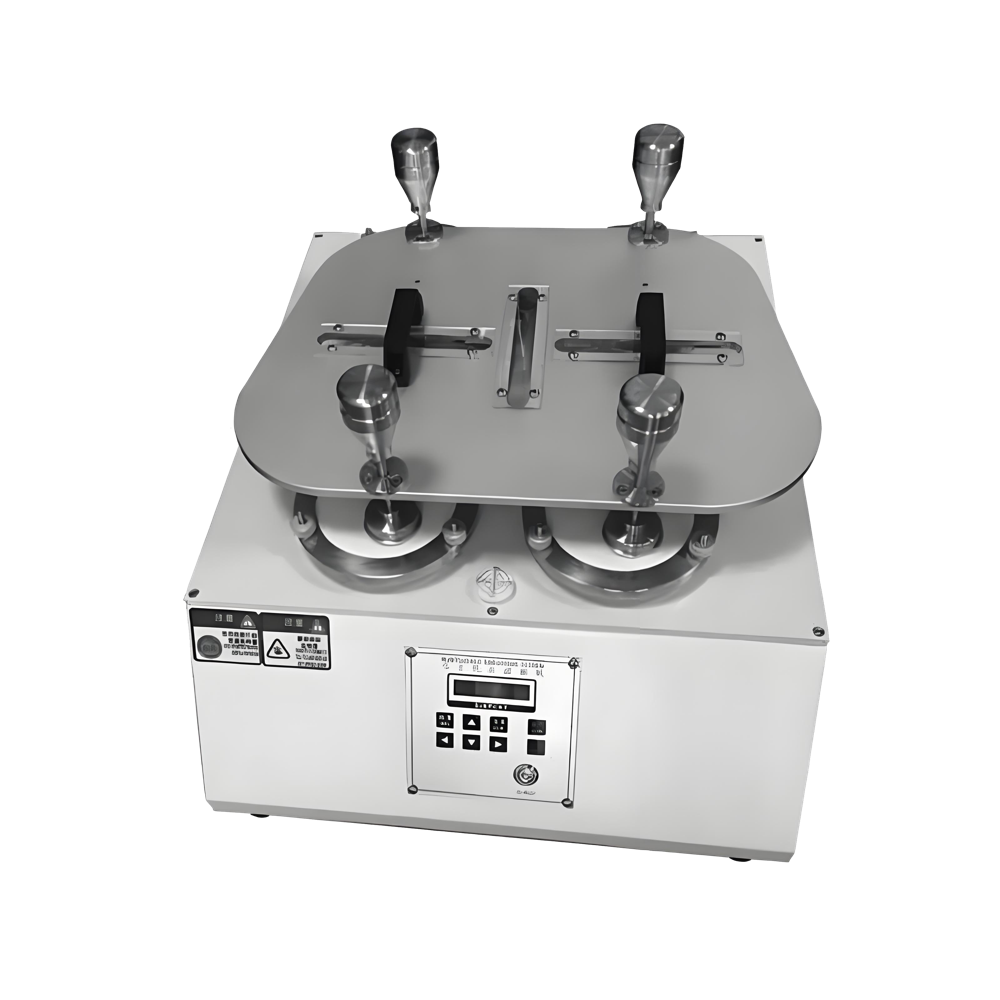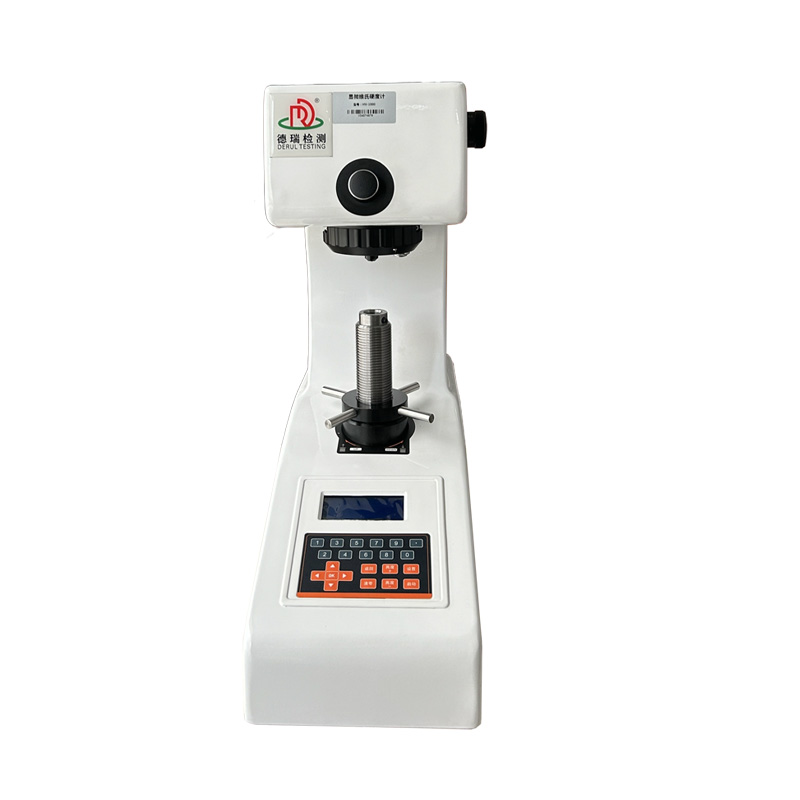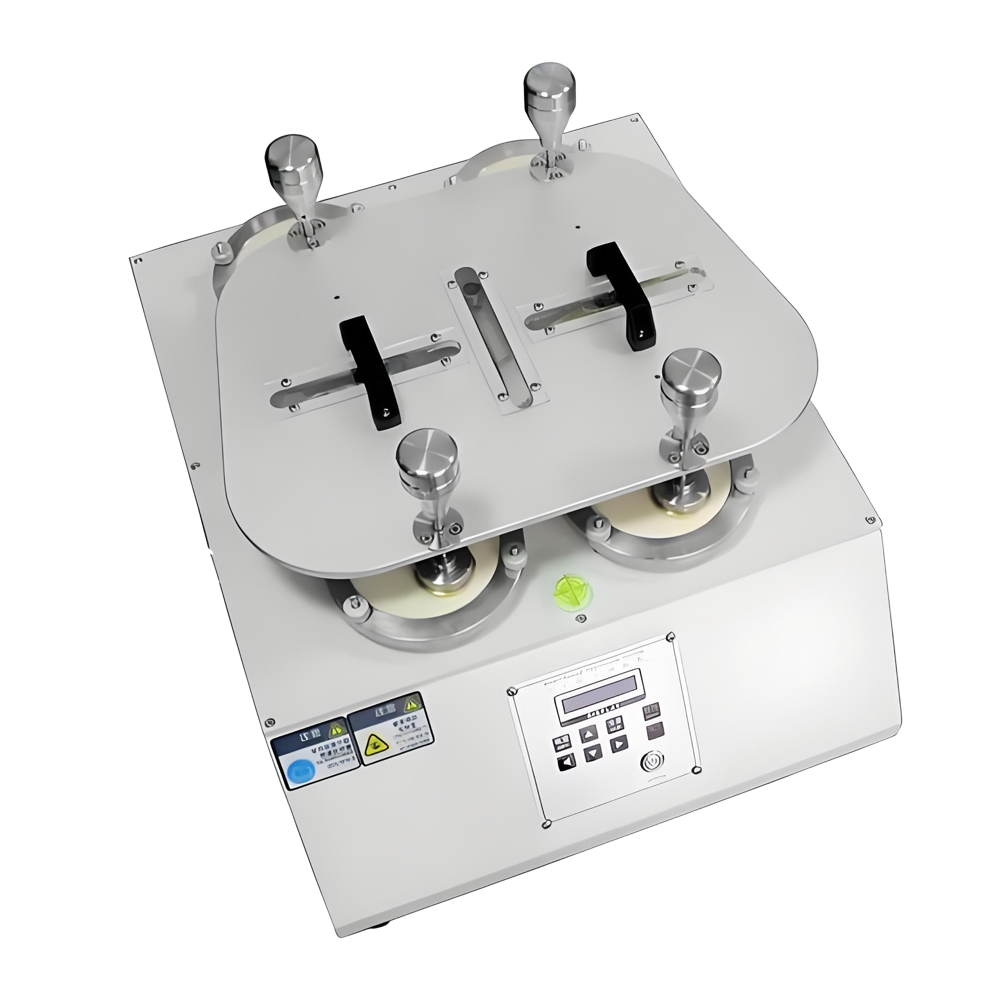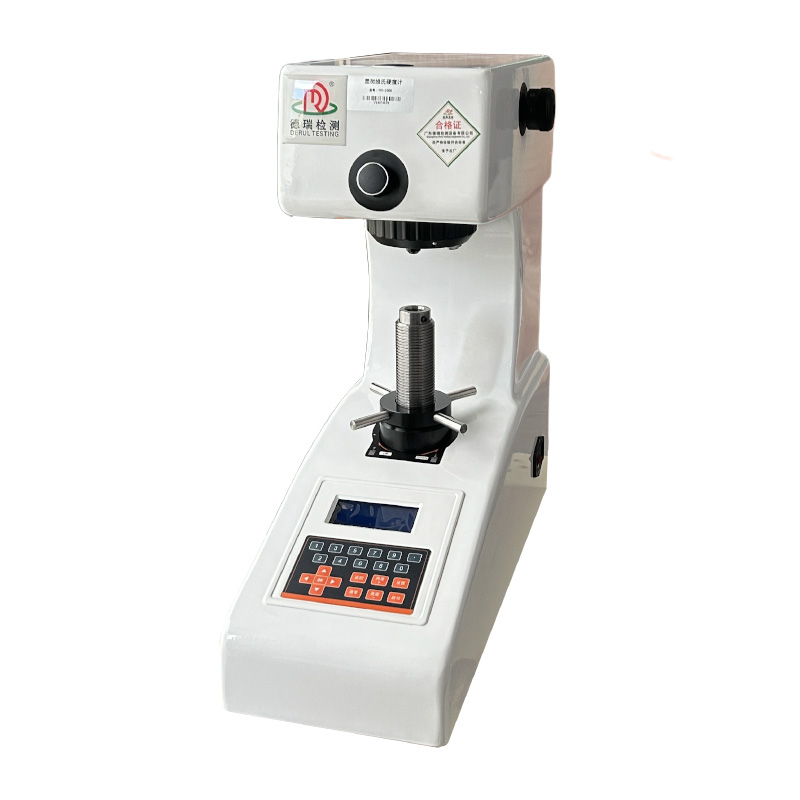The digital Martindale abrasion and pilling tester is an advanced device used to evaluate the abrasion resistance, pilling (fiber breakage forming a fuzzy surface), and pilling (fiber entanglement into small balls) performance of textiles, fabrics, and other similar materials under repeated friction. This tester achieves precise control and real-time monitoring of the testing process through a digital control system and precise sensors. The following is a detailed introduction to the digital Martindale abrasion and pilling tester:
1. Working principle
The working principle of the digital Martindale abrasion and pilling tester is similar to that of the traditional Martindale tester, but it provides higher accuracy and automation level through a digital control system and sensors. The specific steps are as follows:
one
Sample preparation:
Sample size: Cut the fabric sample to be tested into standard sized circular samples, typically with a diameter of 38mm or 140mm.
Fixed sample: Fix the sample on the testing fixture to ensure that it does not move during the testing process.
two
Friction action:
Friction head: The friction head of the tester (usually a 28mm diameter wool felt or rubber pad) performs reciprocating friction on the surface of the specimen with a specific trajectory and pressure.
Motion trajectory: The motion trajectory of the friction head is in the shape of an "8", simulating the wear situation in actual use.
three
Cycle times:
Set the number of cycles: According to the testing standards, set a certain number of friction cycles. The digital control system can accurately control the number of cycles, ranging from hundreds to tens of thousands.
four
Digital monitoring:
Real time monitoring: By using sensors and digital control systems, parameters such as pressure, speed, and number of cycles during the friction process can be monitored in real-time.
Data recording: Automatically record various data during the testing process, including friction frequency, quality changes, pilling and pilling conditions, etc.
five
assessment:
Wear resistance evaluation: After the test is completed, evaluate the quality loss and degree of damage of the sample.
Quality loss: calculated by measuring the change in mass of the sample before and after testing.
Degree of damage: evaluated through visual inspection or using standard rating charts.
Assessment of fuzz: Evaluate the degree of fiber breakage and fuzz on the surface of the specimen.
Ball formation assessment: Evaluate the entanglement of fibers on the surface of the sample into small balls.
2. Main functions
one
Wear resistance test:
Purpose: To evaluate the wear resistance of materials under repeated friction.
Application: Suitable for clothing, home textiles, decorative materials, etc.
two
Fuzz test:
Objective: To evaluate the tendency of materials to produce fiber breakage and furry surfaces during friction.
Application: Suitable for materials that are prone to fuzzing, such as wool, synthetic fibers, etc.
three
Ball test:
Objective: To evaluate the tendency of materials to produce fiber entanglement into small balls during friction.
Application: Suitable for materials that are prone to pilling, such as knitted fabrics, woolen fabrics, etc.
four
Digital control:
Precise control: Through a digital control system, precise control of parameters such as friction pressure, speed, and number of cycles can be achieved.
Automated operation: supports automated operation, reduces human intervention, and improves testing accuracy and efficiency.
five
Multifunctionality:
Multiple testing modes: can perform wear resistance, pilling, and pilling tests simultaneously.
Adjustable parameters: including friction pressure, friction speed, cycle times, etc.
3. Technical features
one
High precision digital control system:
Precise control: Achieve precise control over parameters such as friction pressure, speed, and number of cycles.
Real time monitoring: Various parameters during the testing process are monitored in real-time through sensors.
two
User friendly interface:
Touch screen control: equipped with a touch screen interface, easy to operate.
Program control: Users can set and save multiple test programs.
three
Data recording and analysis:
Real time data recording: Automatically record data such as friction frequency, quality changes, pilling and pilling conditions.
Data analysis tools: Provide data analysis tools to help users evaluate test results.
four
safeguard:
Overload protection: prevent equipment from running under overload.
Emergency stop button: Immediately stop the operation of the equipment in case of emergency.
five
Multi functional fixture:
Adjustable fixture: Suitable for specimens of different sizes and shapes.
Quick replacement: The fixture design facilitates quick replacement of the sample.
4. Application Fields
The digital Martindale abrasion and pilling tester is widely used in the following fields:
one
Textile and Clothing:
Clothing fabrics: Evaluate the wear resistance, fuzzing, and pilling performance of clothing fabrics.
Household textiles: such as bed sheets, curtains, carpets, etc.
two
Automotive interior:
Seat Fabric: Evaluate the wear resistance, pilling, and pilling performance of car seat fabrics.
Interior materials: such as door lining, roof, etc.
three
Furniture and Decoration:
Furniture fabrics: Evaluate the wear resistance, fuzzing, and pilling performance of furniture fabrics such as sofas and chairs.
Carpets and floor mats: Evaluate the wear resistance, pilling and pilling performance of carpets and floor mats.
four
Other fields:
Sports equipment: such as sportswear, sports shoes, etc.
Industrial materials: such as canvas, tent cloth, etc.
5. Ordering process
one
Requirement analysis:
Determine testing requirements: specify the types of materials, testing standards, testing parameters, etc. that need to be tested.
Choose the appropriate model: Select the appropriate digital Martindale abrasion and pilling tester model according to the testing requirements.
two
Inquiry and quotation:
Contact the supplier: Contact the supplier of the tester through phone, email, or online platform.
Obtain quotation: Provide detailed testing requirements and equipment specifications to obtain supplier quotations.
three
Technical consultation and selection:
Technical consultation: Communicate with technical personnel from suppliers to obtain professional selection recommendations.
Confirm the model and configuration: Based on the technical consultation results, confirm the final selected tester model and configuration.
four
Sign the contract:
Negotiate contract terms: including price, delivery time, payment method, warranty terms, etc.
Signing the contract: After both parties confirm the terms of the contract, a formal contract is signed.
five
Manufacturing and Quality Inspection:
Production and manufacturing: Suppliers carry out production and manufacturing according to contract requirements.
Quality inspection: After production is completed, a comprehensive quality inspection is conducted to ensure that the equipment meets the standards.
six
Shipping and installation:
Shipping: Arrange logistics to transport the equipment to the customer's designated location.
Installation and commissioning: The supplier dispatches technical personnel to install and commission the equipment to ensure its normal operation.
seven
Training and usage guidance:
Operation training: Provide training to customer operators, explaining the usage methods and precautions of the equipment.
Provide user manual: Provide detailed user manual and technical information.
eight
after-sale service:
Warranty service: Provide warranty service according to the contract to ensure the normal operation of the equipment.
Technical support: Provide long-term technical support and consulting services.










 English
English Spanish
Spanish French
French German
German Italian
Italian Chinese (Simplified)
Chinese (Simplified) Japanese
Japanese Korean
Korean Arabic
Arabic Portuguese
Portuguese